In case you missed yesterday’s Webcast Audio Seminar (WAS) Session, here are the highlights of this session:
Competency Based Education Across the UME-GME Continuum: the EPAC Program
Presenter: Deborah E. Powell, MD
February 8, 12 PM ET
Education in Pediatrics Across the Continuum (EPAC): a pilot program that seeks to establish a model for competence based-medical education (CBME) through variable-time, meaningfully assessed demonstration of competence across the continuum of undergraduate and graduate medical education using pediatrics as a test specialty.
EPAC was never intended to be a model or all medical education, but rather a model to prove the feasibility of CBME.
Why Pediatrics?
- American Board of Pediatrics was involved innovation initiatives and was interested in considering time variable advancement.
- Pediatrics and surgery had been identified in previous studies as two specialty areas where a relatively high percentage of students could remain committed to the specialty throughout medical school.
EPAC in a Nutshell
- 4 cohorts of medical students (up to 4 per cohort) at 4 participating medical schools would be selected before their first clinical year and offered a pediatrics residency position at the institution at that time.
- EPAC curriculum designed by a school team which included pediatrics clerkship director, pediatrics residency program director and EPAC faculty director
- Data collected on cohort students and non-cohort peers interested in pediatrics
- Longitudinal outpatient pediatrics clinic with designated preceptors begun in Year 2 or 3 and continued into GME
- In addition to required school specific assessments, a common assessment system will be used for all EPAC students (core EPAs, specific pediatrics EPAs and milestones as well as common standardized tests) with specific uniform thresholds for advancement to GME
- 8 of 12 students in cohort 1 met the threshold for advancement to GME during the first semester of their fourth year in medical school in a time variable progression
- 3 students in cohort 1 left EPAC during or after their first clinical year using the pre- designed opt-out path
- Students are being followed in GME in comparison with their non-EPAC peers
Curriculum is different at each of the 4 schools participating in EPAC (University of California, San Francisco, University of Colorado, University of Minnesota, University of Utah)
Consistent for all four Schools
- Longitudinal continuity pediatric clinic, beginning in Year 2 or 3, extending through all residency
- Residency slots guaranteed at each school when a student is selected for an EPAC cohort
- Emphasis on pediatrics throughout curriculum (early pediatric clinic experiences, service learning projects, summer “internships” after Year one) starting in year 1
- Each school agreed to take 4 annual cohorts of students with up to 4 students per cohort. First group of students entered medical school in 2013
Differences
- Third year LIC in Minnesota and San Francisco (MN LIC is pediatric centric)
- Selection of final cohort at end of Year 1 in Colorado, mid-Year 2 in Utah and Minnesota, end of Year 2 in San Francisco
- Special pediatrics clerkship and other pediatric focused clerkship experiences in Utah
Year 1 – EPAC Explore
- Students are introduced to pediatrics and to the EPAC program in a variety of ways in the different schools, including pediatric interest groups, targeted sessions with pediatric faculty, school service learning projects, etc.
- MN offers a summer 2-week internship in pediatrics with a general pediatrician
Year 2 EPAC Focus and EPAC Match
- In EPAC Focus students are offered different activities in each school which immerse them more in pediatrics as a specialty – these may include focused pediatric physical exams, evening sessions with pediatric faculty, etc.
- EPAC Match is the selection of the final cohort. All schools have an application process that includes interviews.
- One school (CO) selects candidates at the end of year 1 so phases are accelerated
Since all of the clinical years at the four schools are different, the 3rd and 4th years are from the University of MN model.
“Year 3” and beyond University of Minnesota
- Longitudinal Integrated Clerkship (LIC)
- Meets the requirements of all the standard core clerkships with exception of the sub-internship
- Up to 12-month prototype but time-variable depending on student achievement
- Transition Phase Curriculum:
- “Preparation for residency” experiences focusing on inpatient medicine
- Includes required sub-internship (NICU) and pediatric hospitalist “sub-internship”
- USMLE Step 2 CK and Step 2 CS
- Enrichment:
- Time-variable experiences tailored to address specific competency areas requiring further development
- Pediatric Residency at the University of Minnesota (GME)
Guiding Principles about Assessment
AAMC Core EPAs and EPAs for a general pediatrician are the framework for the program – we focus on 5 of the Core EPAs in particular which are mapped to the corresponding pediatric EPAs
EPAC students will meet all of the school and LCME graduation requirements
AND
Common learner assessments for all EPAC sites will be performed Advancement according to demonstrated ability that results in entrustment will be the primary criterion. Learner progress in the program must be based on performance against specific outcomes (the competencies as demonstrated through certifiable or Entrustable activities), not only on time. Have agreed on specific
EPA milestone level (3a) for progression to residency across the 4 schools
Specific outcomes Individualized progress
In addition, in order to assure the entrustment needed for advancement to GME, the EPAC group decided to evaluate the core EPAs in a variety of clinical settings
Well care
Simple acute illness
Chronic care, single disease
Chronic care, complex
Urgent, emergent or escalating care
There are 17 Core EPAs for General Pediatrics. Five for the Core EPAs for entering Residency were matched with the corresponding Core EPAs for General Pediatrics.
Core EPA #1 matched with Core EPA for Pediatrics #1
Core EPA #7 matched with Core EPA for Pediatrics #2
Core EPA #9 matched with Core EPA for Pediatrics #4
Core EPA #10 matched with Core EPA for Pediatrics #5
Core EPA #13 matched with Core EPA for Pediatrics #7
Assessment: Summative
- Each continuity preceptor also completes quarterly summative assessment of student on the 13 core EPAS
- Can display each preceptor’s data, average and self-assessment over time for any given student
Assessment Clinical Competency Committee (CCC)
- Quarterly: September, December, March and May
- Modeled after residency CCCs
- Committee composition (at MN): EPAC leadership team and continuity preceptors
- Reviews all assessment data for each student
- Reports de-identified ratings for each student to APPD LEARN database to allow tracking of student progress over time from all schools
CCC provides:
- Longitudinal, developmental, individualized assessment
- Feedback given to student in individual meeting with EPAC course director
- Shared with preceptors
Program Evaluation
In addition to individual student assessment, we are working on evaluating the EPAC program across the 4 schools.
Goals are to address the following issues with a variety of methods including surveys, site visits and focus groups and for a varied group of stakeholders (including faculty, trainees, regulatory bodies and funders):
- Feasibility – can we do it
- Fidelity – can we do it equally well at all sites
- Safety – will we do no harm
- Significance – professional identity, burn-out, etc. using standardized survey instruments and controls
To date seven students have left the EPAC program
Why is EPAC Working?
- Dedication of the medical educators involved with the project
- Willingness of students to trust and experiment with something new
- Support of regulatory groups – in particular:
AAMC
American Board of Pediatrics (ABP)
ACGME
FSMB
NRMP
Continuing Work
- We are continuing to follow our EPAC students in GME and compare them to their non-EPAC GME peers (Stemmler grant)
- We need to show that our EPAC students are at least comparable to their non- EPAC peers in their progress through GME and into fellowship or practice
What Can We Learn from EPAC (and projects like EPAC)
- Regulations can be flexible for pilot projects
- When (how early) can students make lasting decisions about career choice? How are those decisions made?
- Better definition of readiness for residency
- Can we assess “competency (clinical competency)” accurately
- Can we move trainees into and through residency “early”? Is four years of medical school necessary?
- Can we redefine the “generalist” education of medical school?
- What do we really need out of our UME tracks?
- Can we develop more pathways/choices for our students?
- What are the long-term effects of these efforts. Better? Worse?
We hope you’ll join us for the Spring WAS series, which begins on March 8! For more information or to register for the Spring WAS, please click here.
 Each of us has the opportunity to be a leader in medical education, whether it is establishing a vision for a course, an office or modeling behaviors that others may emulate. Our success depends on identifying leadership opportunities within our area of influence. The fast pace of medical education often leaves little time for reflection or for developing and practicing the skills needed to be intentional and authentic leaders.
Each of us has the opportunity to be a leader in medical education, whether it is establishing a vision for a course, an office or modeling behaviors that others may emulate. Our success depends on identifying leadership opportunities within our area of influence. The fast pace of medical education often leaves little time for reflection or for developing and practicing the skills needed to be intentional and authentic leaders.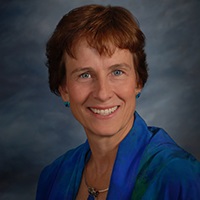 Christina Puchalski: Connecting to Our Call: A Profession of Service and Love [George Washington Institute for Spirituality and Health]
Christina Puchalski: Connecting to Our Call: A Profession of Service and Love [George Washington Institute for Spirituality and Health]
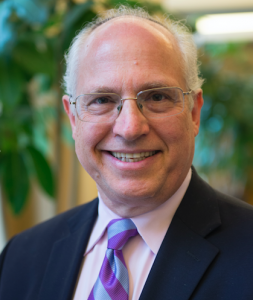 IAMSE is once again pleased to offer the very successful, AMEE-sponsored course: Essential Skills in Medical Education (ESME), led by two distinguished educators: Prof. Ronald Harden, University of Dundee and Prof. Aviad Haramati, Georgetown University. The ESME course requires a separate registration and is held on a full day prior to the IAMSE conference, continues with special discussion sessions during the conference, and concludes with a full afternoon on the final conference day.
IAMSE is once again pleased to offer the very successful, AMEE-sponsored course: Essential Skills in Medical Education (ESME), led by two distinguished educators: Prof. Ronald Harden, University of Dundee and Prof. Aviad Haramati, Georgetown University. The ESME course requires a separate registration and is held on a full day prior to the IAMSE conference, continues with special discussion sessions during the conference, and concludes with a full afternoon on the final conference day.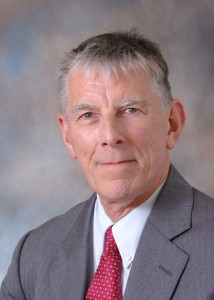 This course explores numerous themes including: learning outcomes and curricular planning, teaching and learning methods, assessment strategies, educational scholarship and the teacher as a leader. The course is ideal for faculty educators who are eager to learn about the principles of health professions education or for seasoned individuals interested in exploring new ideas and trends. Upon completion of the ESME course (with certificate), participants are eligible to enroll in the IAMSE Fellowship program.
This course explores numerous themes including: learning outcomes and curricular planning, teaching and learning methods, assessment strategies, educational scholarship and the teacher as a leader. The course is ideal for faculty educators who are eager to learn about the principles of health professions education or for seasoned individuals interested in exploring new ideas and trends. Upon completion of the ESME course (with certificate), participants are eligible to enroll in the IAMSE Fellowship program.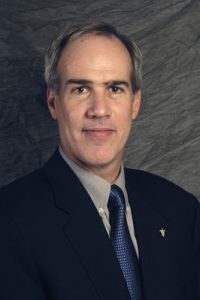 Stuart Slavin: Medical Student Mental Health: Challenges and Opportunities [Saint Louis University School of Medicine]
Stuart Slavin: Medical Student Mental Health: Challenges and Opportunities [Saint Louis University School of Medicine]
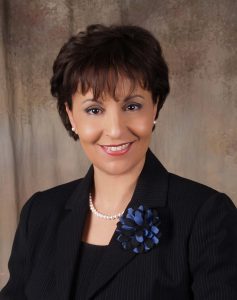
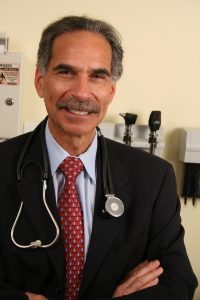 Robert Kushner: Teaching Nutrition in the Context of Lifestyle Medicine [Northwestern University Feinberg School of Medicine]
Robert Kushner: Teaching Nutrition in the Context of Lifestyle Medicine [Northwestern University Feinberg School of Medicine]